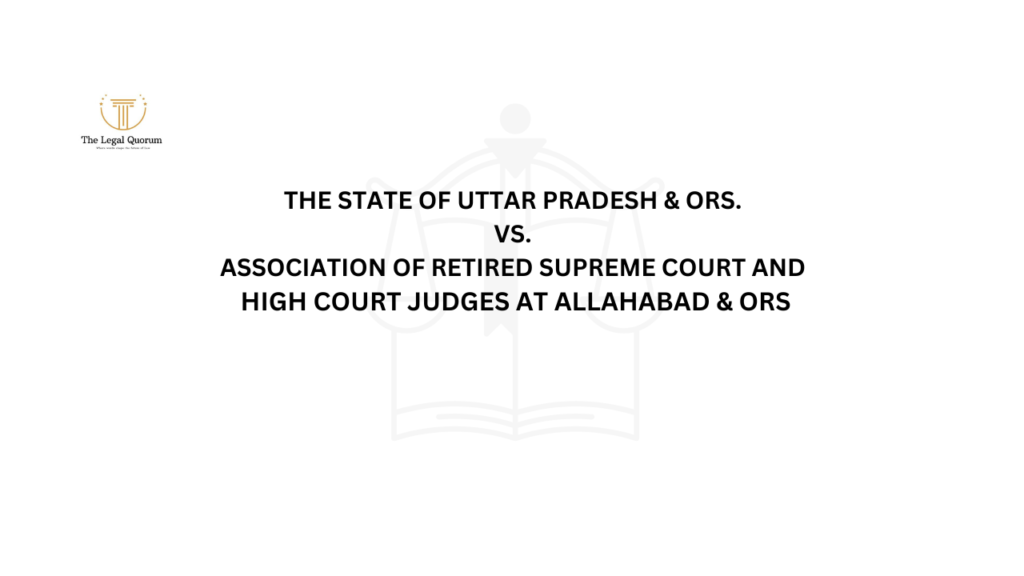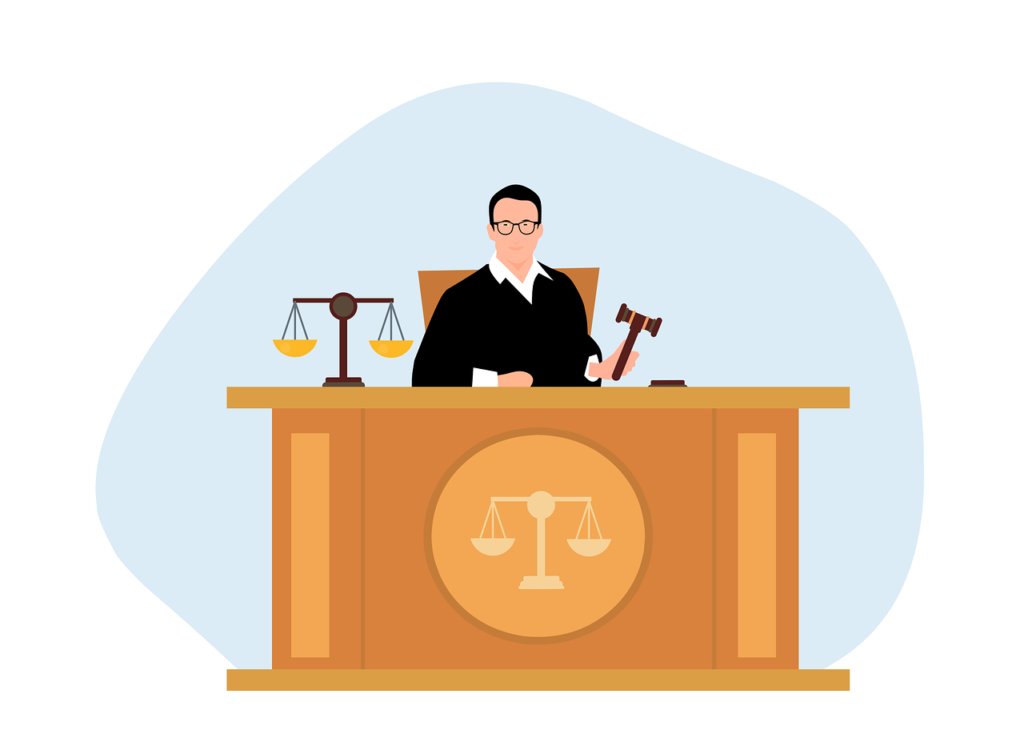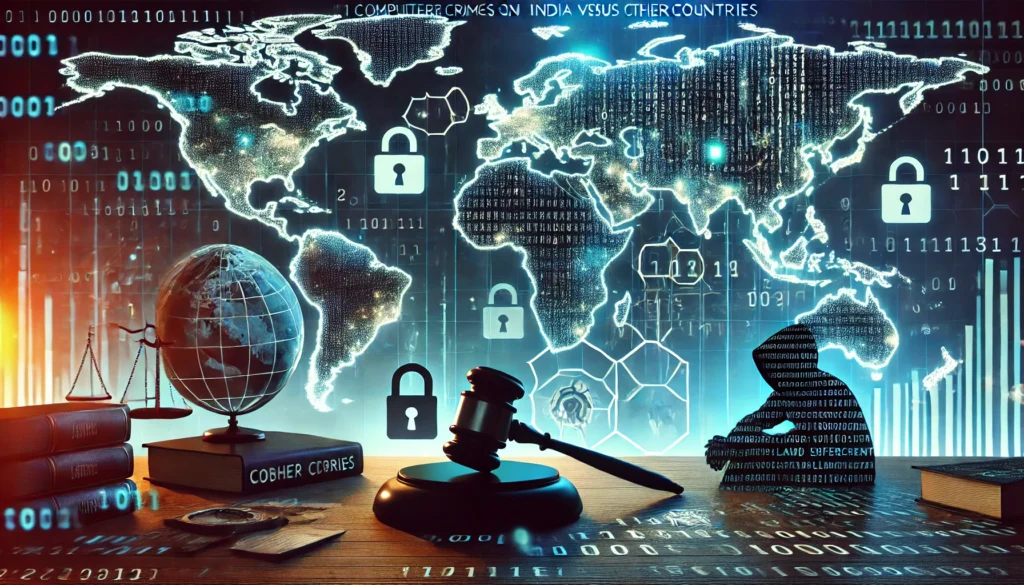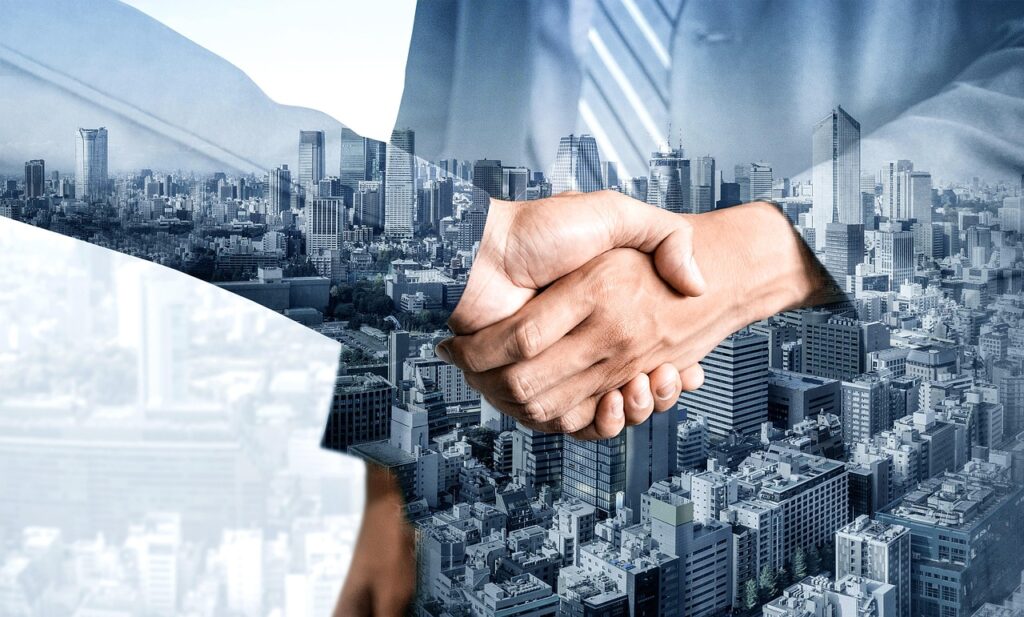Published on 05th August 2025
Authored By: Mandadapu Charitha Chowdary
Indian Institute of Management, Rohtak
Introduction
Munawar Faruqui’s arrest last year after a comedy show started a debate across the country about what people can say.[1] Because of free speech in democracies, people can easily express themselves and take part in meaningful and informative debates. Long ago, these limits were relatively clear; now, they get tricky when speech encourages hatred, violence, or discrimination, as this type of speech is known as hate speech. Here, I review how countries handle hate speech laws, review the pros and cons of such measures, see how they influence Indian society, and discuss the difficulties of managing expressions online. The study explores the difference between supporting freedom of speech and making sure nobody’s dignity is ignored.
Outlining The Importance Of Free Speech And Hate Speech
A lot of societies rely on Free Speech for their systems.
Democracy relies on free speech, which is essential for good governments and mental development. According to the First Amendment, people in the United States are safe to speak out and debate important subjects with the government.[2] According to On Liberty, John Stuart Mill said that discussing a range of ideas helps people find truth and brings about changes in societies like the United States and India.[3] Even so, free speech does not have limits. Speaking freely is not always acceptable if it involves defamation, fraud, or calling people to act violently in democracies that support freedom of speech. People disagree a lot about when speech becomes harmful rather than being allowed by the law in various cultures.
There is much debate over Hate Speech.
Defining hate speech is tricky since it changes from one context to another, which creates issues for law enforcement. The United Nations defines it as any form of speech that attacks or insults people or groups because of their race, religion, ethnicity, gender, sexual orientation, or disability.[4] Yet, since hate is viewed differently by different groups, it is hard to create rules covering it. The same statement that people find offensive in some countries is often discussed or remarked on in another country. Those against hate speech laws say that the terms used can lead to limiting free speech, whereas those who support them claim they are important to defend against harm to certain individuals. Nowadays, this tension becomes stronger as we all use the internet to share our thoughts.
International Strategies in Making Legal Rules
Free speech is a principle that is upheld in the United States.
Free speech is given priority in the United States because it is written into the First Amendment.[2] The court has repeatedly backed the right of people to express opinions that may be controversial under the law. According to Brandenburg v Ohio (1969), any speech affecting public order or safety can only be banned if it calls for immediate lawlessness and could lead to it.[5] Texas v Johnson (1989) decided to protect flag desecration as free speech, even though it upset many people.[6]
They say that allowing “harmful” speech leads to such messages being used more often.[7] Despite being approved by the law, hate speech against minorities may result in increased fear and isolation.[7] It is different from other democracies, which believe that respecting groups is more important than letting people say whatever they want.
Keep in mind to talk both sensibly and respectfully whenever possible.
European nations aim to use stricter regulations to show respect for every person and create solidarity among citizens.[9] The NetzDG law in Germany says social media platforms have to delete hateful content and insults within a short period or risk facing large fines. This method is based on Europe’s past with the Holocaust, proving that hate speech, left unchecked, is very dangerous.[10] Laws in Germany that fight against Holocaust denial help to stop extremist beliefs.[11] Nevertheless, a few argue that these rules could limit what can be said or created.
The task of Maintaining Freedom versus Preserving Law and Order
India’s Constitution ensures people’s freedom of speech without disturbing public peace. Free speech and expression are promised under Article 19(1)(a), but certain restrictions can be put in place by Article 19(2) when they are needed for public order, decency, protecting morality, or maintaining national unity.[12] Hate speech is covered by the Indian Penal Code (IPC) in Sections 153A, 295A, and 505.[5] Similar to the IPC, the Bharatiya Nyaya Sanhita, 2023, has been made with clearer language but incorporates several of the previous IPC’s provisions.[52] India has adopted particular approaches in law due to historic cases. In the case of Ramji Lal Modi v State of UP (1957), the Supreme Court decided to uphold the law by balancing freedom of speech against what was needed for the welfare of the people.[53] Section 66A of the IT Act was abolished by the Court in Shreya Singhal v Union of India (2015), supporting people’s online freedom of speech.[55] In the case of Amish Devgan v Union of India 2020, the Court urged care in ensuring that socially diverse communities stay united.[55] Yet, some argue that things that are not clearly stated in these laws give lawmakers and police the option to target oppressed groups too frequently.[55]
People in other cultures Practice Many Different Exercises
Hate speech laws differ worldwide due to what is significant to each nation. The Canadian Criminal Code, in Section 319, makes it illegal to make hate speech.[5] The Promotion of Equality and the Prevention of Unfair Discrimination Act 2000 prevents people from making unfair statements based on someone’s identity.[6] What is known as racial vilification is covered by Australia’s Racial Discrimination Act (1995). Even so, China’s tough control of the internet often leads to suppression of different views, as it is said to prevent hateful content.[52] They point out various methods for handling free speech at the same time as maintaining social control.[19][20][21][22]
Philosophical Perspectives
Case for Allowing People to Express Themselves Freely Advocates say that open speech is necessary for the freedom of people, the democracy of society, and finding the truth. To John Stuart Mill, preventing anyone from making offensive statements stops the progress of society.[23] The ACLU allows hate speech to hold to their goal of supporting all types of views.[24] The way civil rights groups have been limited in the past because of safety concerns proves that censorship can be dangerous.[15] People who believe in complete freedom of speech argue that letting people reply to hate speech with debate is better than having the government ban words.[25]
The reasons why hate speech needs regulation are explained.
Those who oppose hate speech mention how it hurts humans, encourages stereotypes, turns places hostile, and often spreads conflict. In 1995, Richard Delgado and Jean Stefancic showed that hate speech can negatively affect people’s minds, divide groups, and, from time to time, result in physical violence.[26] In 1994, radio programs in Rwanda led to the genocide and showed these dangers.[28] Some people believe that part of democracy includes laws that restrict certain kinds of harmful speech. There is an opinion among scholars, for example, Catharine MacKinnon, that hate speech aimed at minority groups restricts their expression of opinions.[29]
Search for Alternatives That Help the Workers
Philosophically speaking, the harm principle states that speech should not be restricted unless it is very likely to cause violence or serious and measurable harm, which happened in Brandenburg v Ohio.[5] In some regions, it is common to pass tougher rules for minorities, but balancing these rules with the right to free speech is difficult because traditions are always changing.
Today’s modern society faces new problems.
There is also the connection between Social Media and the Multiplier Effect Ideas that spread hate are now shared right away globally due to X, Facebook, and YouTube. Facebook’s suggested and promoted posts are usually selective posts that result in echo chambers where hate speech is most common. Due to WhatsApp rumors, people in India were sometimes attacked and killed, so the government urged the platform to control its content more closely.[34]
An increasing number of conflicts over who has authority have developed in different countries.
Since the internet is accessible all over the world, regulating it is not easy. Just speaking about the Holocaust denial in the U.S. is allowed, but it could be illegal in Germany, so platforms have to find a way to manage both legal systems.[35] Even though the Digital Services Act (2022) requires blocking online material immediately, enforcing the practice seems uneven between member states, and it is tough for small businesses to obey this policy, which leads to worries about losing diverse content online.[36] False news, much of it made with technology, was found in the 2019 Indian election, making it harder for officials to deal with.[38] Because countries have different cultures, it is hard to make worldwide rules.
Societal Impacts
Marginalized Communities
People from minority communities often suffer the most from hate speech, which adds to their harassment, exclusion, and possible attacks. The Anti-Defamation League stated that online anti-Semitic attacks rose in 2021, usually in tandem with actual attacks on Jewish Americans.[38] Because of harmful comments during the pandemic, Asian Americans faced attacks.[39] In Europe, the rise of far-right groups was partly caused by people speaking against immigrants.[40]
Indian Context
In India, hate speech leads to more disagreements among religious groups. Many social media messages during the 2019–20 CAA and NRC protests played a role in addressing the Delhi riots.[41] Politicians’ hostile speech led to the 2020 Delhi riots, where more than 50 people passed away.[42] Many times, Section 295A is used against minorities or anyone who speaks against the mainstream, which goes against freedom of expression.[43]
The concept of unity helps people form relationships, but it also results in dividing others.
Toxic talk encourages unfairness and leads to more separation among people. Polarizing content on X in America has made the divisions between political parties wider, as 70% of Americans say there is more hostility now than there was in 2016.[44] Communal speech caused the 2002 Gujarat riots, damaging the way different communities in India got along.[45] If nations use tough regulations like censorship, they can make people from different groups feel isolated and leading to growing extremism.[46]
Examples and different suggestions
Legal Reforms
Hate speech laws need to be accurate and should not target speech causing relatively little harm, following democratic values.[47] In India, making it clear how Section 295A is applied could help avoid misuse. According to the UN’s Rabat Plan of Action, member nations can work toward matching their policies on a global level.[49]
Platform Accountability
All social networks should be open about the way they manage the content on their platforms. When a company uses independent oversight, such as Meta’s Oversight Board, it improves its accountability.[50] Algorithms ought to lower the presence of hateful content and highlight a range of ideas. If WhatsApp followed similar actions after the lynchings in 2018, then interaction with authorities in India would likely handle local issues.[51] Through such programs, people are encouraged to evaluate information with care.
Discovering More About Other People and Talking with Them
For long-term results, more people should be educated. At schools, teaching critical thinking and empathy is suggested by UNESCO to help reduce prejudice.[52] Reports show that participation by different groups in post-apartheid South Africa and India plays a big role in encouraging unity.[53]
Conclusion
In democracies, it is still a tough task to balance free speech and hate speech, since several important aspects, such as laws, morality, culture, and technology, must be taken into account. Being home to a range of religions, languages, and castes, the Indian Constitution ensures there is free speech in India under Article 19(1)(a), but it can be limited for good reasons established in Article 19(2). Laws help keep violence down and keep society in government-approved order, but their uncertain use could stop people from criticizing or making jokes about the leaders. The case of Shreya Singhal and Amish Devgan demonstrates that the judiciary was necessary in deciding what constitutes censorship and what is protected speech, with constant variations in how laws were applied and political stress.[15][17]
Every nation tackles hate speech in ways that fit its history and background. The United States focuses strongly on free speech, while Europe and South Africa give more weight to dignity and allow more control. Digital services make regulation hard, so solutions should be made by all parties and based on local needs.
The next steps need to ensure that the law is clear, platforms are carefully watched, and people are taught about these issues. Lawmakers should create laws that are always clear and open to check and discussion by everyone. Every platform has to be monitored independently and show clear algorithms. If youth gain legal and civic knowledge, they will know how to deal with information found on the internet using solid judgment and empathy.
For democracy to function well, it is important to match freedom and dignity, accept that no person deserves hate, and thereby let real debate continue. A maintained balance in India can help the world develop an environment that includes all, shows respect, and is strong.
References:
[1]: Munawar Faruqui v State of Madhya Pradesh 2023 SCC OnLine SC 493.
[2]: United States Constitution, Amendment I.
[3]: John Stuart Mill, On Liberty (John W Parker and Son 1859) 21–22.
[4]: United Nations, ‘Strategy and Plan of Action on Hate Speech’ (2019) https://www.un.org/en/hate-speech/un-strategy-and-plan-of-action-on-hate-speech accessed 5 June 2025.
[5]: Brandenburg v Ohio 395 US 444 (1969).
[6]: Texas v Johnson 491 US 397 (1989).
[7]: Nadine Strossen, HATE: Why We Should Resist It with Free Speech, Not Censorship (OUP 2018) 45.
[8]: Netzwerkdurchsetzungsgesetz 2018 (Germany).
[9]: European Convention on Human Rights, art 10.
[10]: Public Order Act 1986 (UK), s 18; Code Pénal (France), art 24.
[11]: German Criminal Code, s 130(3).
[12]: Constitution of India 1950, arts 19(1)(a), 19(2).
[13]: Indian Penal Code 1860, ss 153A, 295A, 505.
[14]: Bharatiya Nyaya Sanhita 2023, ss 196, 294, 351(3).
[15]: Ramji Lal Modi v State of UP AIR 1957 SC 620.
[16]: Shreya Singhal v Union of India AIR 2015 SC 1523.
[17]: Amish Devgan v Union of India (2021) 1 SCC 1.
[18]: Gautam Bhatia, Offend, Shock, or Disturb: Free Speech under the Indian Constitution (OUP 2016) 89.
[19]: Criminal Code RSC 1985 c C-46 (Canada), s 319.
[20]: Promotion of Equality and Prevention of Unfair Discrimination Act 2000 (South Africa).
[21]: Freedom House, ‘Freedom on the Net 2023: China’ https://freedomhouse.org/country/china/freedom-net/2023 accessed 5 June 2025.
[22]: Racial Discrimination Act 1975 (Australia), s 18C.
[23]: Mill (n 3) 36.
[24]: American Civil Liberties Union, ‘Free Speech’ https://www.aclu.org/issues/free-speech accessed 5 June 2025.
[25]: Strossen (n 7) 112.
[26]: Richard Delgado and Jean Stefancic, Must We Defend Nazis? Hate Speech, Pornography, and the New First Amendment (NYU Press 1995) 45.
[27]: David Yanagizawa-Drott, ‘Propaganda and Conflict: Evidence from the Rwandan Genocide’ (2014) 129 Q J Econ 1947.
[28]: Jeremy Waldron, The Harm in Hate Speech (Harvard UP 2012) 45.
[29]: Catharine MacKinnon, Only Words (Harvard UP 1993) 71.
[30]: Brandenburg v Ohio (n 5).
[31]: Safiya Umoja Noble, Algorithms of Oppression (NYU Press 2018) 112.
[32]: Pew Research Center, ‘64% of Americans Say Social Media Have a Mostly Negative Effect’ (15 October 2020) https://www.pewresearch.org/short-reads/2020/10/15/64-of-americans-say-social-media-have-a-mostly-negative-effect-on-the-way-things-are-going-in-the-u-s-today// accessed 5 June 2025.
[33]: UN Human Rights Council, ‘Report on Myanmar’ (2018) A/HRC/39/64.
[34]: Chinmayi Arun, ‘On WhatsApp, Rumours, and Lynchings’ (2019) 54 Economic & Political Weekly 30.
[35]: German Criminal Code (n 11).
[36]: Digital Services Act, Regulation (EU) 2022/2065.
[37]: Joyojeet Pal, ‘Misinformation and the 2019 Indian Elections’ (2019) 54 Economic & Political Weekly 15.
[38]: Anti-Defamation League, ‘Online Hate and Harassment: The American Experience 2021’ (2021) https://www.adl.org/resources/report/online-hate-and-harassment-american-experience-2021 accessed 5 June 2025.
[39]: Stop AAPI Hate, ‘National Report 2020–2021’ (2021) https://stopaapihate.org/wp-content/uploads/2021/08/Stop-AAPI-Hate-Report-National-v2-210830.pdf accessed 5 June 2025.
[40]: European Union Agency for Fundamental Rights, ‘Hate Crime Reporting 2022’ https://fra.europa.eu/en/themes/hate-crime accessed 5 June 2025.
[41]: Human Rights Watch, ‘India: Violent Protests over Citizenship Law’ (14 February 2020) https://www.hrw.org/news/2020/04/09/india-protests-attacks-over-new-citizenship-law accessed 5 June 2025.
[42]: Amnesty International, ‘India: Delhi Riots 2020’ (2020) https://www.amnesty.org/en/petition/protect-our-human-rights-work-in-india/ accessed 5 June 2025.
[43]: Bhatia (n 18) 102.
[44]: Pew Research Center, ‘The State of Political Polarization in America’ (27 June 2022) https://www.pewresearch.org/politics/2014/06/12/political-polarization-in-the-american-public/ accessed 5 June 2025.
[45]: Human Rights Watch, ‘We Have No Orders to Save You: Gujarat Riots 2002’ (2002) https://www.hrw.org/reports/2002/india/ accessed 5 June 2025.
[46]: Freedom House, ‘Freedom on the Net 2023: Turkey’ https://freedomhouse.org/country/turkey/freedom-net/2023 accessed 5 June 2025.
[47]: Waldron (n 28) 65.
[48]: Arun (n 34).
[49]: UN Office of the High Commissioner, ‘Rabat Plan of Action’ (2013) https://www.ohchr.org/en/documents/outcome-documents/rabat-plan-action accessed 5 June 2025.
[50]: Meta Oversight Board, ‘Annual Report 2022’ https://www.oversightboard.com/news/560960906211177-2022-annual-report-oversight-board-reviews-meta-s-changes-to-bring-fairness-and-transparency-to-its-platforms/ accessed 5 June 2025.
[51]: Arun (n 34).
[52]: UNESCO, ‘Media and Information Literacy: Policy and Strategy Guidelines’ (2013) https://unesdoc.unesco.org/ark:/48223/pf0000225606 accessed 5 June 2025.
[53]: Truth and Reconciliation Commission, ‘South Africa Final Report’ (1998) https://www.britannica.com/topic/Truth-and-Reconciliation-Commission-South-Africa accessed 5 June 2025.
Bibliography
- American Civil Liberties Union, ‘Free Speech’ https://www.aclu.org/issues/free-speech accessed 5 June 2025.
- Amnesty International, ‘India: Delhi Riots 2020’ (2020) https://www.amnesty.org/en/petition/protect-our-human-rights-work-in-india/ accessed 5 June 2025.
- Anti-Defamation League, ‘Online Hate and Harassment: The American Experience 2021’ (2021) https://www.adl.org/resources/report/online-hate-and-harassment-american-experience-2021 accessed 5 June 2025.
- Arun, Chinmayi, ‘On WhatsApp, Rumours, and Lynchings’ (2019) 54 Economic & Political Weekly 30.
- Bhatia, Gautam, Offend, Shock, or Disturb: Free Speech under the Indian Constitution (OUP 2016).
- Delgado, Richard, and Jean Stefancic, Must We Defend Nazis? Hate Speech, Pornography, and the New First Amendment (NYU Press 1995).
- European Union Agency for Fundamental Rights, ‘Hate Crime Reporting 2022’ https://fra.europa.eu/en/themes/hate-crime accessed 5 June 2025.
- Freedom House, ‘Freedom on the Net 2023: China’ https://freedomhouse.org/country/china/freedom-net/2023 accessed 5 June 2025.
- Freedom House, ‘Freedom on the Net 2023: Turkey’ https://freedomhouse.org/country/turkey/freedom-net/2023 accessed 5 June 2025.
- Human Rights Watch, ‘India: Violent Protests over Citizenship Law’ (14 February 2020) https://www.hrw.org/news/2020/04/09/india-protests-attacks-over-new-citizenship-law accessed 5 June 2025.
- Human Rights Watch, ‘We Have No Orders to Save You: Gujarat Riots 2002’ (2002) https://www.hrw.org/reports/2002/india/ accessed 5 June 2025.
- MacKinnon, Catharine, Only Words (Harvard UP 1993).
- Meta Oversight Board, ‘Annual Report 2022’ https://www.oversightboard.com/news/560960906211177-2022-annual-report-oversight-board-reviews-meta-s-changes-to-bring-fairness-and-transparency-to-its-platforms/ accessed 5 June 2025.
- Mill, John Stuart, On Liberty (John W Parker and Son 1859).
- Noble, Safiya Umoja, Algorithms of Oppression (NYU Press 2018).
- Pal, Joyojeet, ‘Misinformation and the 2019 Indian Elections’ (2019) 54 Economic & Political Weekly 15.
- Pew Research Center, ‘64% of Americans Say Social Media Have a Mostly Negative Effect’ (15 October 2020) https://www.pewresearch.org/short-reads/2020/10/15/64-of-americans-say-social-media-have-a-mostly-negative-effect-on-the-way-things-are-going-in-the-u-s-today/?gad_source=1&gad_campaignid=22285027172&gbraid=0AAAAA-ddO9EgBWdwvUkVOCw5S0aiYkTUv&gclid=CjwKCAjwr5_CBhBlEiwAzfwYuG-mnX-3dk5RBEJdBqkuR2Z9L0IKf_90mE_tLrmiw0PQOOe2kq0K1hoCogwQAvD_BwE accessed 5 June 2025.
- Pew Research Center, ‘The State of Political Polarization in America’ (27 June 2022) https://www.pewresearch.org/politics/2014/06/12/political-polarization-in-the-american-public/ accessed 5 June 2025.
- Stop AAPI Hate, ‘National Report 2020–2021’ (2021) https://stopaapihate.org/wp-content/uploads/2021/08/Stop-AAPI-Hate-Report-National-v2-210830.pdf accessed 5 June 2025.
- Strossen, Nadine, HATE: Why We Should Resist It with Free Speech, Not Censorship (OUP 2018).
- Truth and Reconciliation Commission, ‘South Africa Final Report’ (1998) https://www.britannica.com/topic/Truth-and-Reconciliation-Commission-South-Africa accessed 5 June 2025.
- UN Human Rights Council, ‘Report on Myanmar’ (2018) A/HRC/39/64.
- UN Office of the High Commissioner, ‘Rabat Plan of Action’ (2013) https://www.ohchr.org/en/documents/outcome-documents/rabat-plan-action accessed 5 June 2025.
- UNESCO, ‘Media and Information Literacy: Policy and Strategy Guidelines’ (2013) https://unesdoc.unesco.org/ark:/48223/pf0000225606 accessed 5 June 2025.
- United Nations, ‘Strategy and Plan of Action on Hate Speech’ (2019) https://www.un.org/en/hate-speech/un-strategy-and-plan-of-action-on-hate-speech accessed 5 June 2025.
- Waldron, Jeremy, The Harm in Hate Speech (Harvard UP 2012).
- Yanagizawa-Drott, David, ‘Propaganda and Conflict: Evidence from the Rwandan Genocide’ (2014) 129 Q J Econ 1947.
- Amish Devgan v Union of India (2021) 1 SCC 1.
- Brandenburg v Ohio 395 US 444 (1969).
- Munawar Faruqui v State of Madhya Pradesh 2023 SCC OnLine SC 493.
- Ramji Lal Modi v State of UP AIR 1957 SC 620.
- Shreya Singhal v Union of India AIR 2015 SC 1523.
- Texas v Johnson 491 US 397 (1989).
- Bharatiya Nyaya Sanhita 2023.
- Code Pénal (France).
- Constitution of India 1950.
- Criminal Code RSC 1985 c C-46 (Canada).
- Digital Services Act, Regulation (EU) 2022/2065.
- European Convention on Human Rights.
- German Criminal Code.
- Indian Penal Code 1860.
- Netzwerkdurchsetzungsgesetz 2018 (Germany).
- Promotion of Equality and Prevention of Unfair Discrimination Act 2000 (South Africa).
- Public Order Act 1986 (UK).
- Racial Discrimination Act 1975 (Australia).
- United States Constitution.




